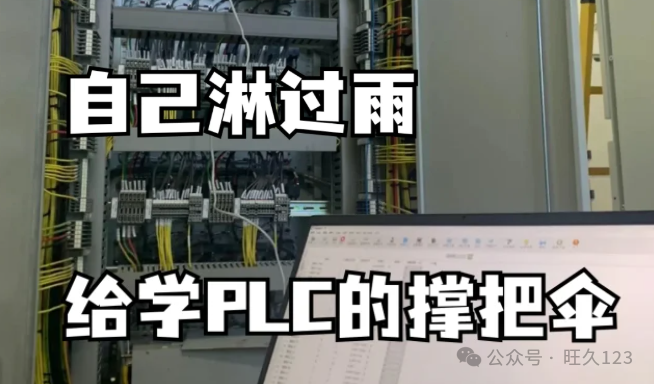
Optimizing PLC Protocol: Setting Communication Timeout Parameters to Enhance Adaptability in Harsh Environments!
Introduction
Dear automation engineers, today I want to share a particularly practical technique for harsh industrial environments — optimizing PLC communication timeout parameters! I believe many of you have encountered this issue: in factories with severe electromagnetic interference and aging lines, PLC communication occasionally goes haywire, causing inexplicable production line shutdowns.Don’t worry, by properly setting the communication timeout parameters, you can ensure your PLC operates stably in harsh environments, improving the communication success rate by over 50%! Want to know how to do it? Let’s explore together!
What are Communication Timeout Parameters?
Let’s start with a vivid analogy: imagine you are on a call with a friend who has a poor signal, and if they don’t respond within 5 seconds, you hang up and redial. This is the “timeout mechanism”. PLC communication works on a similar principle.
**Communication timeout parameters** mainly include three key settings:
-
Response Timeout: The maximum time to wait for a reply from the slave device
-
Frame Interval Timeout: The maximum allowed interval between two data frames
-
Retry Count: The number of automatic retries after a communication failure
These parameters act like the “patience adjuster” for PLC communication; setting them too short may lead to frequent misjudgments, while setting them too long may affect fault response speed.
Why Optimize Timeout Parameters?
Some engineers might say: “I’m doing fine with the default parameters, right?” However, in the following scenarios, the default settings are often insufficient:
-
High Interference Environments: For example, in welding workshops or areas dense with frequency converters, electromagnetic interference can cause frequent errors in communication frames
-
Long-Distance Communication: When the distance between devices exceeds 100 meters, signal attenuation can prolong response times
-
Old Equipment: PLCs and lines that have been in use for many years will naturally experience decreased communication stability
Typical Case: In a PLC network at an automotive factory’s welding workshop, the default response timeout was 100ms, which frequently triggered communication faults during welding actions. After adjusting the parameter to 300ms, the communication fault rate dropped by 70%!
Timeout Parameter Optimization Methodology
1. Benchmark Testing Method
Steps:
-
Record the communication response time under normal conditions (T₁)
-
Record the response time under maximum load conditions (T₂)
-
Set response timeout = T₂ × 1.5 + safety margin
**Tip:** Use the PLC’s communication diagnostic function to visually see the historical maximum response time.
2. Interference Simulation Method
Deliberately test under the following conditions:
-
Turn on all high-power devices
-
Intentionally create line interference
-
Simulate network congestion scenarios
Remember:“Worst-case response time + 20%” is the optimal timeout setting.
3. Dynamic Adjustment Strategy
Advanced PLCs (like Siemens S7-1500) support:
-
Adaptive Timeout: Automatically adjusts based on historical communication quality
-
Hierarchical Timeout: Short timeout for critical instructions, long timeout for non-critical instructions
Recommended Practical Parameters
Based on common industrial scenarios, I have summarized these reference values:
| Environmental Conditions | Response Timeout | Frame Interval Timeout | Retry Count |
|——————-|———-|————|———-|
| Clean Workshop | 100-200ms| 50ms | 3 |
| Regular Factory | 300-500ms| 100ms | 5 |
| High Interference Area | 800-1500ms| 200ms | 8 |
| Wireless Communication Network | 2000-3000ms| 500ms | 10 |
**Important Note:** These values need to be fine-tuned based on actual testing!
Common Problem Solutions
Q1: Will setting a long timeout affect the production line rhythm?
A:No! Modern PLCs support background retry mechanisms, and communication retries will not block program scanning.
Q2: How to avoid a “deadlock” state?
Solution:
-
Set up aheartbeat packet mechanism
-
Usedual timeout (short timeout detection + long timeout disconnection)
-
Add awatchdog timer
Q3: Where are the parameter settings for different PLC brands?
-
Siemens: Hardware Configuration → Communication Parameters
-
Mitsubishi: Network Parameters → PLC Parameters
-
Omron: CPU Settings → Serial Communication
Advanced Techniques
-
Protocol Stack Optimization: Some PLCs allow adjustment of the protocol stack buffer size
-
Physical Layer Enhancement: Based on timeout optimization, you can:
-
Add communication repeaters
-
Switch to fiber optic transmission
-
Add signal amplifiers
Redundant Communication: Use dual-channel communication for critical devices, with automatic switching on timeout
Interactive Discussion
-
What is the most challenging PLC communication issue you have encountered? How did you ultimately resolve it?
-
What unique timeout setting techniques do you use with your PLC brand?
-
For wireless PLC communication (such as WIFI, 5G), what special considerations should be taken for timeout settings?
Conclusion
Optimizing communication timeout parameters is the “cost-effective king” solution for enhancing PLC adaptability in harsh environments. There is no need for additional hardware investment; significant improvements in system stability can be achieved through software settings. Remember:There are no universally perfect parameters, only customized settings that best suit your on-site working conditions!
I hope this article helps you solve communication faults! If you have any questions or experience to share, feel free to leave a comment. Let’s use our professional skills to create a more reliable industrial automation system!
ShareSaveViewLike